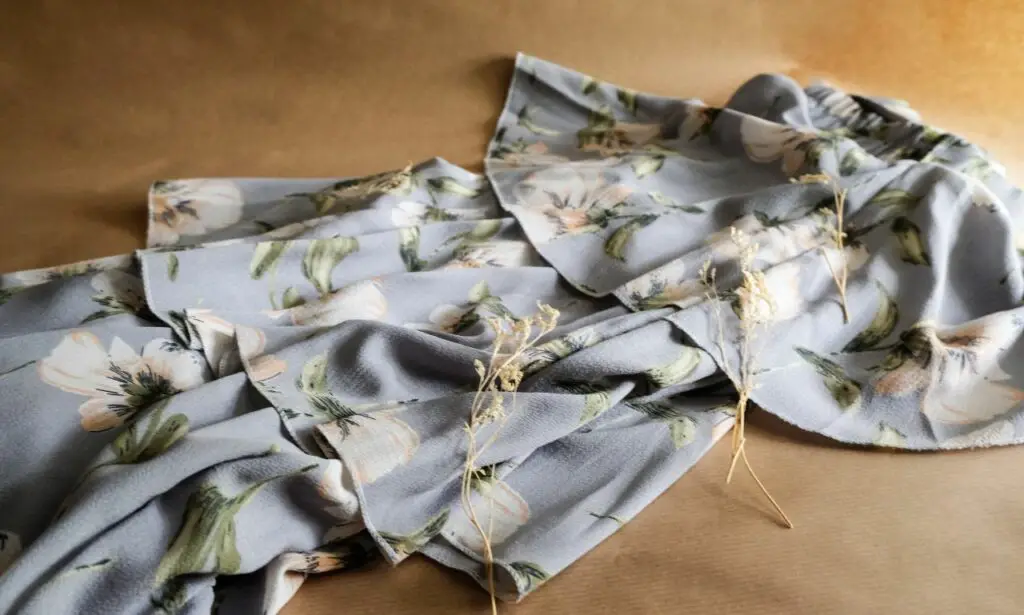A Maxi dress is a long, lightweight, and breathable women’s outfit that’s form-fitting at the top and free at the bottom. From this definition, cotton, rayon, polyester, silk, and crepe are the best fabrics to make a maxi dress. These intrinsically delicate fabrics are susceptible to damage if you wash or dry them the wrong way.
Some maxi dresses are also quite colorful and full of prints that can be ruined by the wrong washing method. So if you have a couple of beautiful maxi dresses that you cherish, here’s how to wash and dry them the right way to ensure they last long, maintain shape and still look beautiful.
Read the Care Label
Every garment comes with a care label attached somewhere on the inside. The label has instructions on how to take care of the fabric to keep it in tip-top shape. Pay more attention to what the label says you cannot do than what it suggests you do.
For instance, saying you can’t machine wash the dress is different from suggesting you dry clean it. Manufacturers only list the most recommended cleaning method, but it doesn’t mean the others are out of the question. If there is a no machine wash or tumble dry sign, that means you can only hand wash or dry clean.
It’s also important to learn what the symbols mean or check on google if you don’t understand what a certain symbol means.

Hand Wash
Unless a dress is ‘dry clean only,’ the best way to clean it is to hand wash it in a basin or sink. If you are washing the dress among other clothes, sort them out first into lights and colors, and then soak the whites for at least 30 minutes before hand washing. To soak, add some mild detergent to warm water in a basin, add your dress and other whites and let them sit there to loosen dirt and stains.
Once enough time has passed, swirl the clothes gently in circles (side to side) for 5-8 minutes. You can also scrub dirty areas like armpits and hemlines with your hands. Next, gently squeeze the soapy water out of each garment and transfer it to clean water in another basin. Rinse twice or thrice until all the soap is out. (You will know there is no more soap because the dress will drip clean water when you squeeze).
Press the item against the edge of the basin to remove excess water. You should never wring out delicate fabrics because they will wrinkle or get damaged.
Machine Wash in the Delicate Cycle
To machine wash delicate fabrics, we recommend using the delicate setting and cold water. Materials like cotton and polyester do not react well to heat, so you should also avoid warm water. If your machine doesn’t have a delicate setting, use the lowest setting to minimize friction. Before you begin;
- Treat stains by gently dabbing a natural stain remover like vinegar or baking soda on the affected area. While commercial stain removers and bleach are effective, they affect the color and fabric of your dress.
- Turn the dress inside out to protect it from friction and color bleeding. If the maxi dress has pockets, turn them out so they can be washed.
- You can also put the dress in a laundry mesh bag if you are worried about color deterioration and shedding. Polyester and other synthetic fabrics shed microfiber plastic into your machine, and the only way to minimize shedding is using a laundry bag. The Kimmama mesh laundry bag reduces shedding by 79-86% and keeps the lint from getting into your machine.
- Add a mild laundry detergent and fabric softener if the dress is polyester. We recommend laundry soap because synthetic clothes draw the petroleum from regular detergents and coat themselves with it, making it impossible to clean them thoroughly. For deep cleaning, go with something mild like the Arm & Hammer Plus OxiClean with a stain remover.
- Use the lowest cycle to wash and take the dress out of the wash immediately after the cycle ends.

Drying a Maxi Dress
Again, most maxi dresses are made of delicate materials which do not react well to heat. Cottons tend to shrink in heat, and synthetics get damaged. Therefore, it is wise to avoid tumble drying and air drying instead. Once the wash cycle ends, remove the dress and shake all the moisture out. This simple step will straighten the dress, so it’s less wrinkled after drying.
Ideally, you should hang your dress on a clothesline outside to dry. If the dress is white, hang it under direct sunlight, which makes whites whiter. Otherwise, hang under a shade because sunlight will damage the fabric’s color and cause fading.
An indoor hanging rack will do if you don’t have hanging lines. It has rods where you can drape your dress and take it outside for some fresh air. However, you can also lay the dress flat on the rack instead of hanging it. This reduces wrinkling and stretching, and it’s best if you are only drying one item of clothing.
In an emergency where you must use the dryer, set the temperature to the lowest setting possible. Most maxi dresses are light, so they will dry fast even in the low-temperature setting. You should place a dryer sheet or two at the bottom of the machine to prevent static cling, which happens with synthetic clothes.
Related articles
- How to hang a maxi dress
- How to wash, dry and iron a cotton maxi dress
- How to wash, dry, and Iron synthetic maxi dress
The safest way to clean a maxi dress is to hand wash with mild laundry soap and cold to warm water. Hand washing causes less friction to the dress fabric and also protects the decorative parts of the dress, such as zippers, belts, and pockets.
We do not recommend ironing a maxi dress because that subjects the fabric to heat damage. If the dress is wrinkled, however, you can place a bed sheet or towel between the dress and the iron when ironing to protect it from heat. Turn the dress inside out, and make sure you iron the pockets as well.










